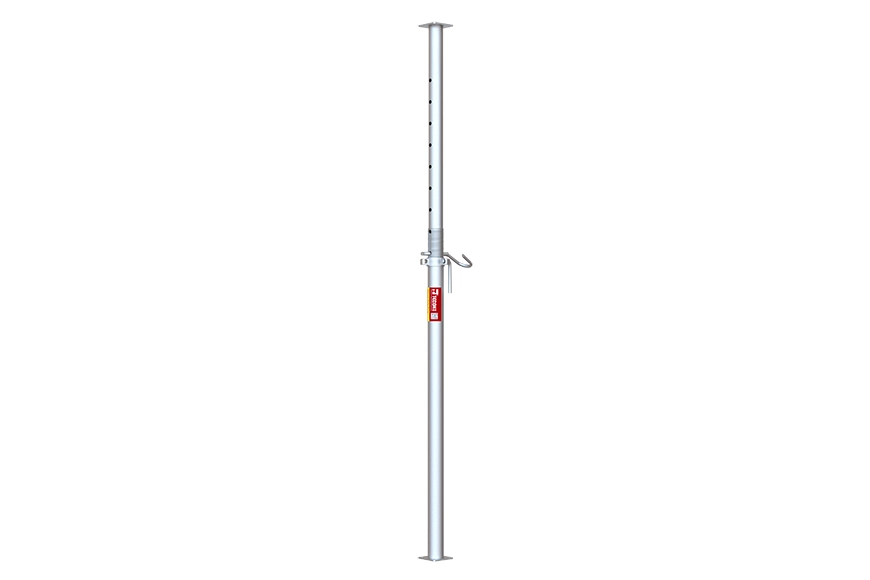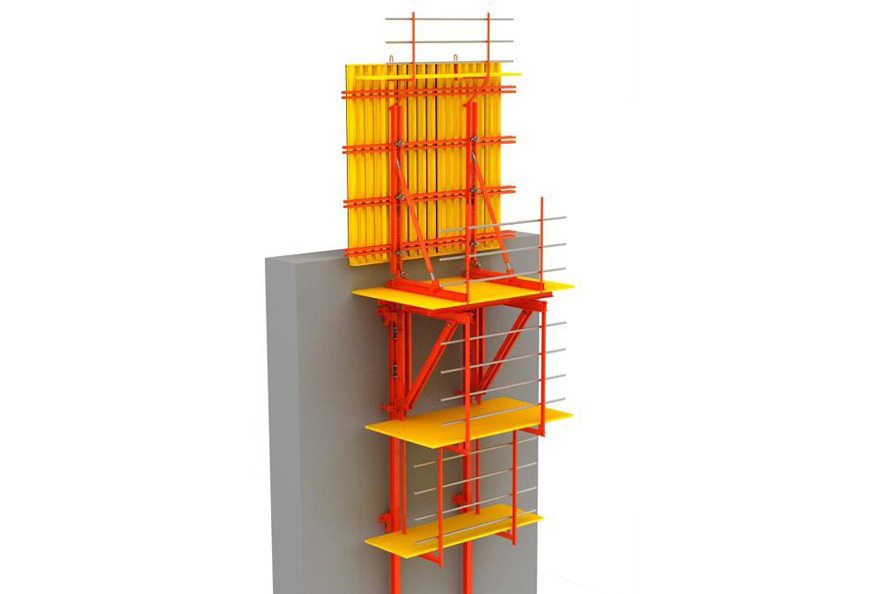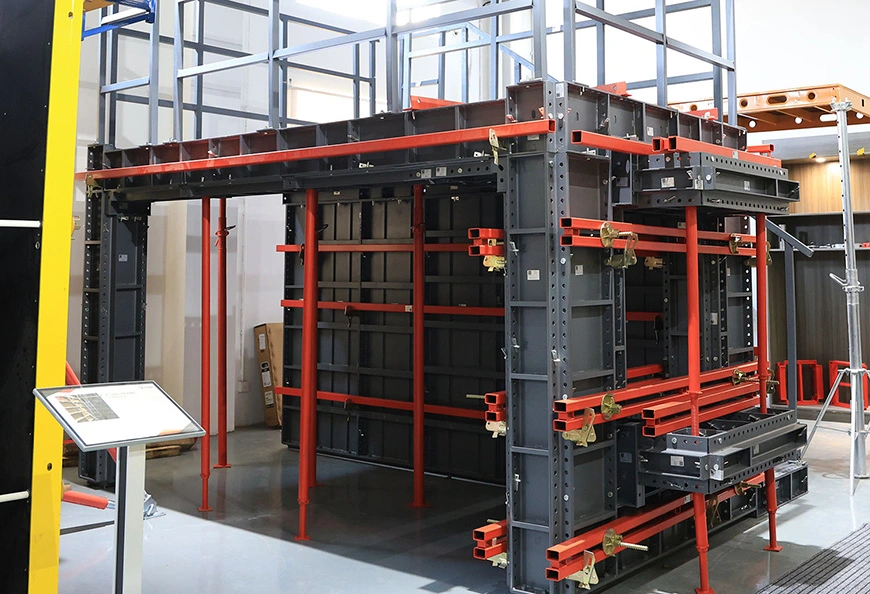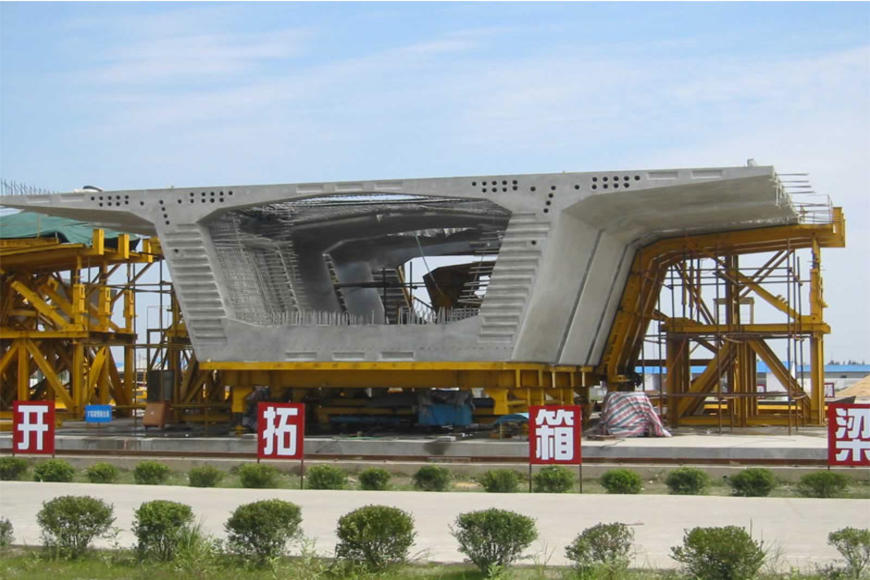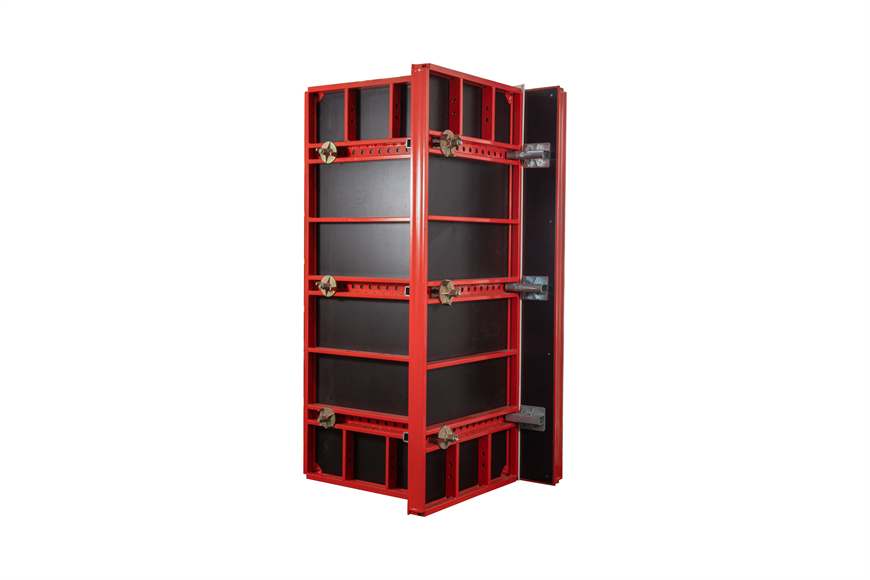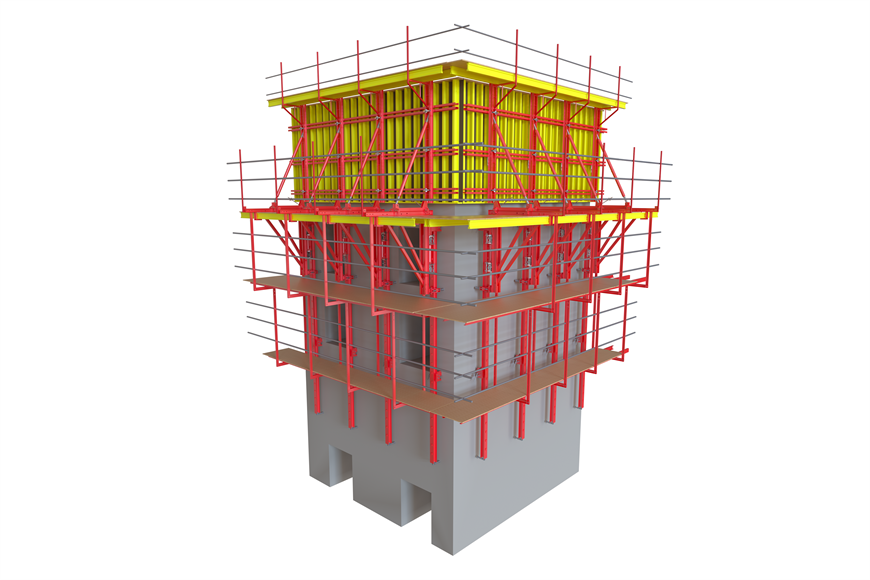Formwork for high rise building refers to the temporary or permanent molds used to support and shape the concrete structures during the construction of high-rise buildings. Formwork for high rise building is an indispensable tool in building construction, widely applied to the concrete pouring of structures, floors, beams, and columns in high-rise buildings. Formwork for high rise building not only ensures the quality of concrete construction but also plays a crucial role in project progress, construction safety, and cost control.
The types of formwork for high rise building can be classified based on the materials used:
Steel Formwork: Steel formwork is commonly used for the construction of floors, walls, and columns in high-rise buildings due to its high strength, large load-bearing capacity, and multiple reuses. The smooth surface of steel formwork contributes to a better surface finish of the concrete, making it suitable for large-scale construction projects.
Aluminum Alloy Formwork: Lighter than steel formwork, aluminum alloy formwork is easier to handle and install. It has high rigidity and corrosion resistance, making it ideal for use in concrete components like floors, walls, and columns in high-rise buildings. It also has a long service life, capable of being reused over 500 times.
Timber Formwork: Timber formwork is a traditional material for building templates, often used in construction projects with a lower budget or where temporary molds are required. It is easy to process, convenient for construction, and mainly used in small high-rise building projects.
Plastic Formwork: Made from high-strength polypropylene or polyvinyl chloride materials, plastic formwork is lightweight, easy to operate, and resistant to corrosion. It is suitable for non-load-bearing parts of high-rise buildings, particularly walls and floors.
Precast Concrete Formwork: In high-rise building construction, some companies use precast concrete formwork to accelerate the construction process. These formworks are manufactured in factories and installed on-site, significantly reducing construction time and improving efficiency.
As an integral part of modern building construction, formwork for high rise building, with its precision, construction efficiency, and safety, provides strong support for high-rise building projects.
